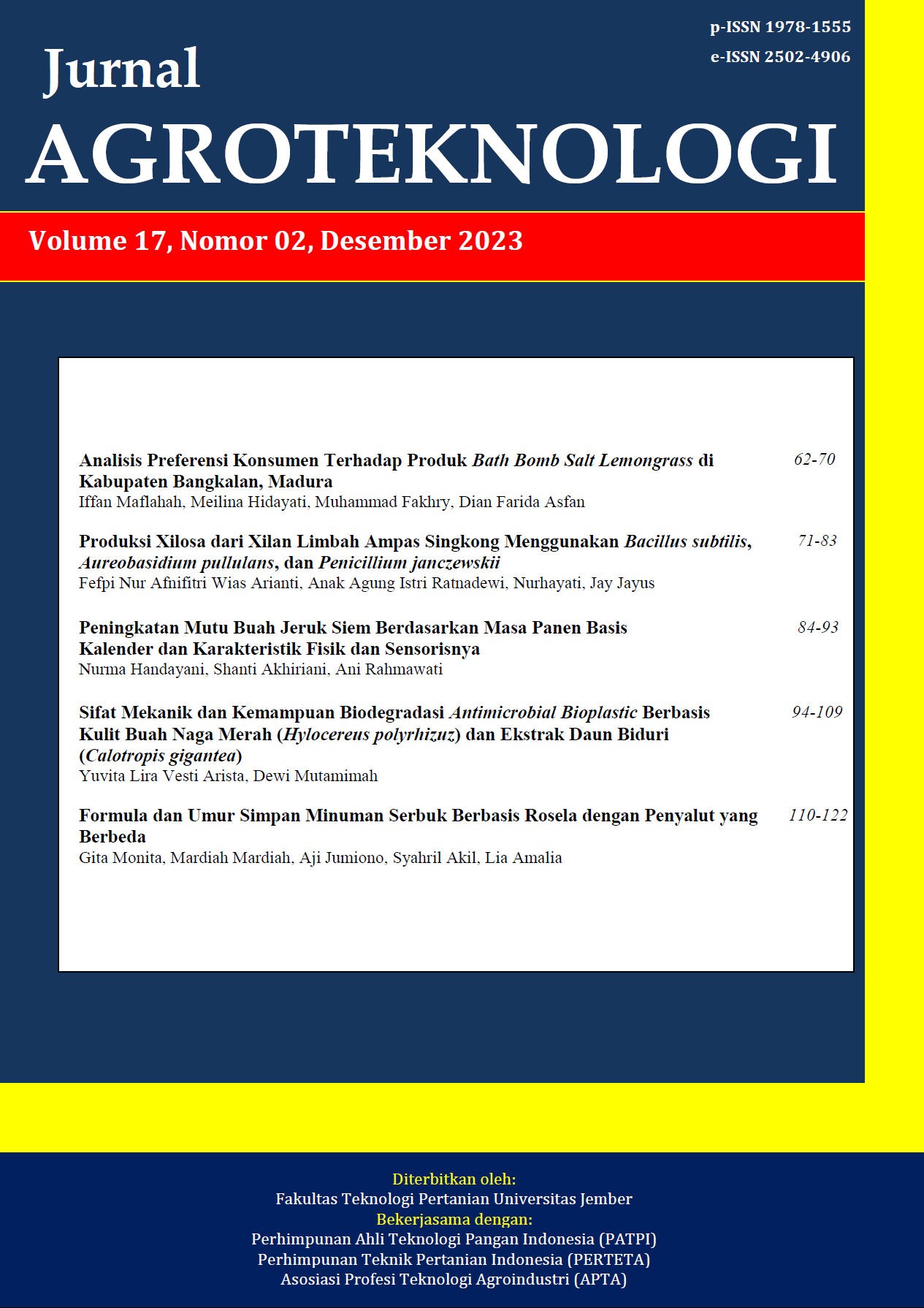Formula dan Umur Simpan Minuman Serbuk Berbasis Rosela dengan Penyalut yang Berbeda
DOI:
https://doi.org/10.19184/j-agt.v17i02.44170Abstract
Research on functional foods has been conducted by many researchers for healthy benefit (as an anti-obesity, anti-inflammatory, herbal drink, etc). One interesting research is the development of roselle (Hibiscus sadbariffa Linn) based functional foods in the form of powder drinks and its shelf life during storage. So that, this study aims to determine the shelf life of powder drinks made from roselle extract, lemon extract, mangosteen peel extract, and EGCG (epigallocatechin galat). In this study, the application of roselle extract was carried out with three different types of coating materials. Determination of shelf life was tested for moisture content, anthocyanin content, and vitamin C content to obtain roselle extract formulations with selected coating ingredients. The data obtained were analyzed using oneway ANOVA. The powder drink formulation was stored at 3 different temperatures of 25, 35, and 45oC for 16 days. Tests were carried out on days 0, 4, 8, and 16 days. The shelf life calculation is calculated based on the Accelerated Shelf Life Test (ASLT) Arrhenius model. The results showed that the type of encapsulated coating had a significant effect on the characteristics of water content, anthocyanin levels, and vitamin C levels at the level of 95%. The F3 sample (roselle extract, maltodextrin, pectin, and whey) was the most stable sample and had the longest shelf life in roselle powder beverage at 512 days at a storage temperature of 25oC.
Keywords: anthocyanin, coating material, roselle extract, shelf life, vitamin C
Downloads
Downloads
Published
Issue
Section
License
Jurnal Agroteknologi has CC-BY-SA or an equivalent license as the optimal license for the publication, distribution, use, and reuse of scholarly work. Authors who publish with this journal retain copyright and grant the journal the right of first publication with the work simultaneously licensed under a Creative Commons Attribution-ShareAlike 4.0 International License that allows others to share the work with an acknowledgment of the work's authorship and initial publication in this journal.
 JURNAL AGROTEKNOLOGI
JURNAL AGROTEKNOLOGI 








.png)
